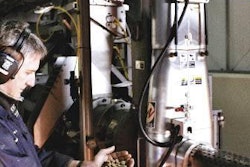
There's some sort of classic struggle going on here. First, the petfood industry wants to produce good safe products at the best possible profit. Next, the public wants to buy good safe products at the best possible price. And finally, regulators want to make the best possible compromises.
However, regulators tend to be chronically under funded. The world talks safety but doesn't adequately fund it. This fact is widely known. There are no angels or devils here, just speckled shades of gray.
Perhaps what we need are ways to use peer pressure to increase the voluntary safety efforts of all companies. Perhaps we need a more effective regulatory presence. Perhaps, if the Food and Drug Administration (FDA) does not get enough funding, we will be forced to rely on voluntary safety regardless of what we want.
AFIA's safety dialogue
I recently attended the American Feed Industry Association's (AFIA) "National dialogue on import ingredient safety." AFIA wants to give the FDA input on crafting Guidelines for Industry (GFI) for improving petfood safety. Here are points and questions that came out of the meeting:
- It is essential that the rules be science-based.
- Will regulators, especially state and international, use GFI advice against petfood companies?
- What's the difference between voluntary and regulated safety?
- Another problem: lack of uniformitywill FDA focus on big companies, but not hold smaller companies accountable?
- What's the difference between voluntary and regulated petfood safety, especially for small companies that can usually get by with ignoring regulations?
- Are problems usually with the companies that don't come to meetings like the recent AFIA dialogue on ingredient safety?
- Don't make the requirements a disincentive for good quality assurance.
- If companies are taking samples that can be used against them by regulators, it's a disincentive for taking samples.
To be continued
AFIA launched its Safe Feed/Safe Food Certification Program on Sept. 22, 2004. It is intended for companies interested in demonstrating their pledge to food safety and enhancing consumer confidence in the products they provide. Will something like this be enough? Probably not, but it is a step in the right direction.


.png?auto=format%2Ccompress&fit=crop&h=167&q=70&w=250)
.png?auto=format%2Ccompress&fit=crop&h=167&q=70&w=250)













